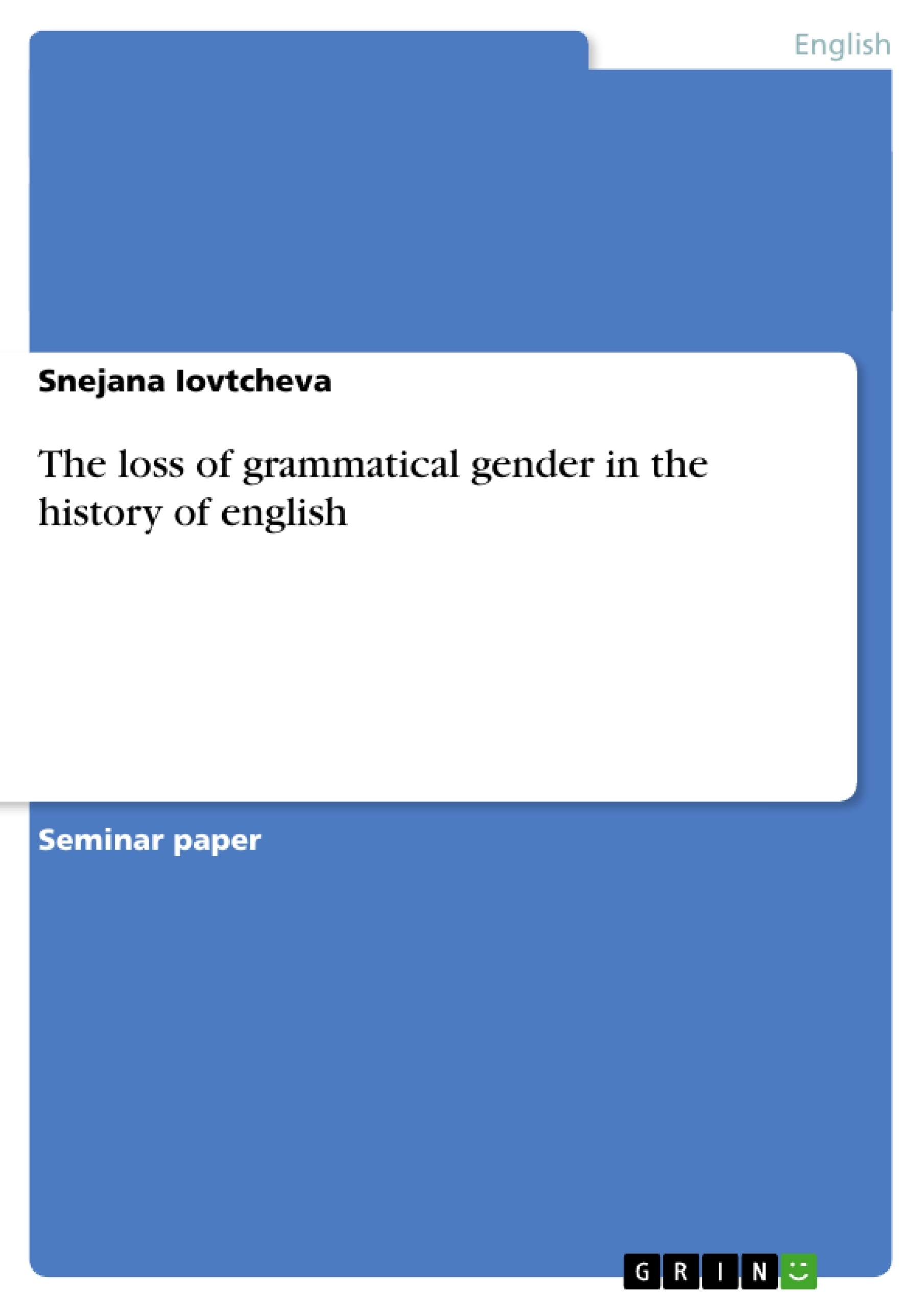This paper analyzes the question of how and why grammatical gender got lost in English. In order to do so, it reviews the recent literature on gender shifts in Old English and Middle English. The paper identifies several theoretical explanations based on both diachronic studies of English and general theoretical studies of gender. More concretely, the paper discusses the work of Greville Corbett (1991) on gender, Anne Curzan’s (2003) analysis on gender shifts in the history of English, and Charles Jones’s (1988) assumption of a possible paradigm shift in Old English. At the same time, older studies are given as an example for why certain premises did not work in the past.
The paper first coments the relationship of English within the language families, provides a linguistic definition of grammatical gender, and describes major properties of the Modern English gender systems as well as those of the Old English gender system. It looks at the morphological and syntactic changes that triggered a shift in the English gender system. It is argued that not only external changes but also an underlying paradigm shift induced the demise of grammatical gender in Old English. In addition, the role of the personal pronouns is analyzed. According to Curzan (2003) and Corbett (1991) the role of the personal pronouns may prove to be the key in explaining the shift in the gender system.
Inhaltsverzeichnis (Table of Contents)
- Introduction
- English in the family of languages
- Defining grammatical gender
- Properties of the Modern English gender system
- Properties of the Old English gender system
- The breakdown in grammatical gender marking
- Morphological explanations for the loss of grammatical gender in Old English
- The role of the attributes in Old English
- The role of the personal pronouns in Old English
- Conclusion
Zielsetzung und Themenschwerpunkte (Objectives and Key Themes)
This paper analyzes the loss of grammatical gender in English. It examines recent literature on gender shifts in Old English and Middle English, identifying theoretical explanations based on both diachronic studies of English and general theoretical studies of gender.
- The history of grammatical gender in English
- Theoretical explanations for the loss of grammatical gender
- The role of morphology and syntax in gender change
- The impact of personal pronouns on gender systems
- The evolution of gender systems from formal to natural
Zusammenfassung der Kapitel (Chapter Summaries)
- Introduction: This chapter introduces the research question and outlines the paper's objectives. It mentions key sources used in the study, including works by Greville Corbett, Anne Curzan, and Charles Jones. It also briefly outlines the paper's structure.
- English in the family of languages: This chapter discusses the position of English within the Indo-European language family. It explains the concept of language families and subgroups, and how languages develop and diversify over time. It also discusses different methods for studying language development, including synchronic comparison of related languages and diachronic studies of individual languages.
- Defining grammatical gender: This chapter provides a linguistic definition of grammatical gender, emphasizing that it is a syntactic property of nouns. It distinguishes between strict semantic gender systems and formal gender systems, highlighting the role of semantic factors and formal morphological and phonological factors in gender assignment. The chapter also discusses the widespread occurrence of grammatical gender across languages and the essential criterion of gender agreement.
- Properties of the Modern English gender system: This chapter describes the limited gender classification in Modern English, focusing on the role of suffixes like -man and -ness in indicating male and female human beings, respectively. It also discusses the minimal gender marking in the pronominal system, emphasizing the role of the third-person pronouns he, she, and it in maintaining the gender system. Corbett's characterization of Modern English as a form of strict semantic gender system is presented.
- Properties of the Old English gender system: This chapter explores the morphological and syntactic changes that led to the shift in the English gender system. It discusses the breakdown in grammatical gender marking, morphological explanations for the loss of gender, and the role of attributes and personal pronouns in Old English. The chapter argues that the demise of grammatical gender in Old English was driven by not only external changes but also by an underlying paradigm shift.
Schlüsselwörter (Keywords)
The key terms and concepts explored in this paper include grammatical gender, diachronic linguistics, Old English, Middle English, gender shift, morphological changes, syntactic changes, paradigm shift, personal pronouns, formal gender systems, semantic gender systems, and language families.
- Quote paper
- Snejana Iovtcheva (Author), 2007, The loss of grammatical gender in the history of english, Munich, GRIN Verlag, https://www.grin.com/document/80461



